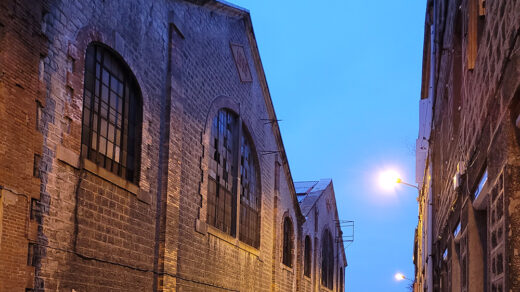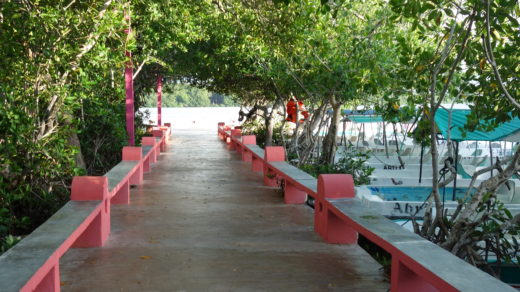Christmas is an important moment. I mean to me, at least. So, every year, I try to write cool articles about very Christmassy places. This year, I didn’t feel like that, I wanted some change. So I thought, ok, what could be nice for this time of the year? And I realized that almost exactly 4 years ago, I was in a fantastic place. Near Mumbai, there are mysterious caves called Elephanta Caves. They are located on an island, uhhh, more mystery… Let’s talk about them!

Improvising A Visit Of Elephanta Caves
Mumbai is a great place to chill. It feels safe, it’s beautiful, you can easily talk to people and find good food. Plus, the weather was so good compared to the cold and foggy Delhi. Even though I had noted some must-do in Mumbai, I had also decided not to pressure myself to do anything.
On that beautiful day in December, I walked around the South of Bombay, then went to see the impressive Gateway of India, this giant arch near the waterfront. There, there were boats to go to Elephanta Island. I hesitated because the boat trip was one hour and I wasn’t sure I would have the time to enjoy the place. In the end, I decided to give it a shot and hopped on a boat.
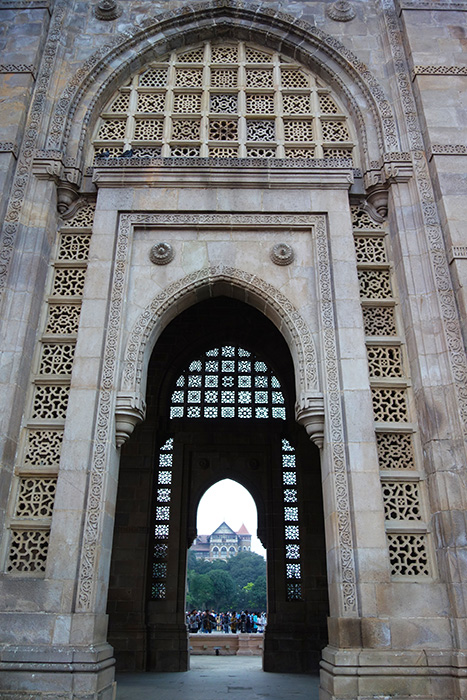
The Boat Trip Is Part Of The Experience
In my opinion, the boat trip is part of the experience. The boat I traveled on was made of colorful wood. Despite the people around me talking loudly, I felt really calm. I sat at the front to see where we were going. A lot of seagulls were accompanying us, partly because some passengers were giving them food.
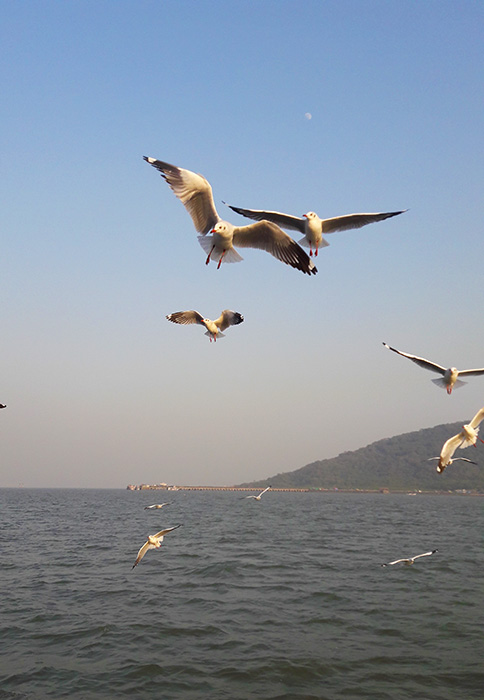
It takes a while to reach Elephanta Caves, so you should enjoy that part of the visit. That said, given that the boat trip takes an hour, make sure you have enough time to visit the island before you go. I think it’s best not to be stressed if you want to fully appreciate the sculptures and stories. In India, do less to enjoy more. Well, it’s actually advice you could apply to any place you travel to…
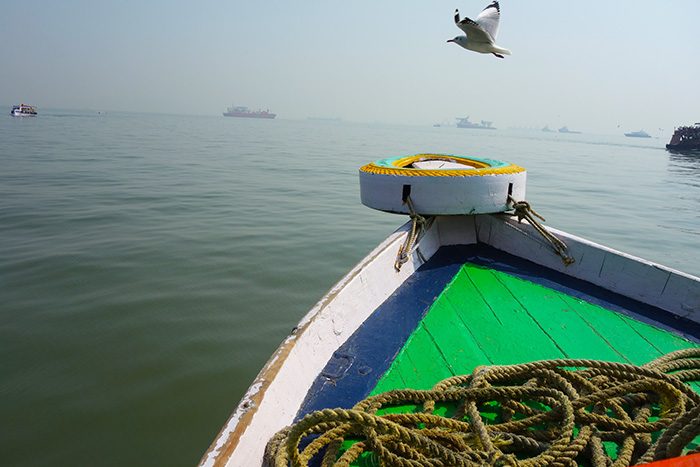
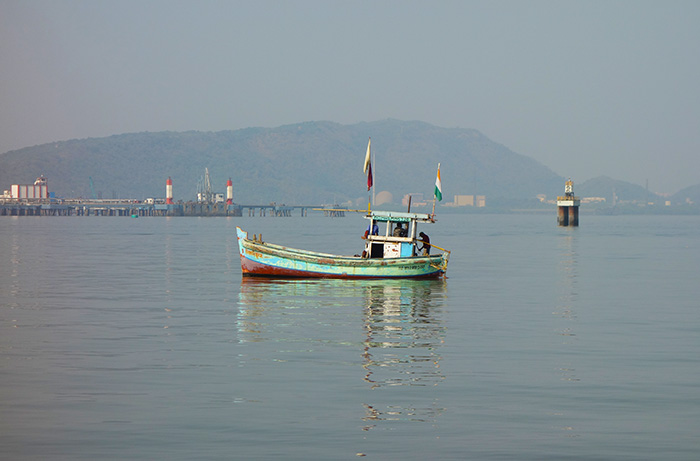
Arriving To The Elephanta Caves
On the island, one of the first things you see is this cute little red train that takes you to the caves. I didn’t get on it, but I took pictures. It really is a charming train and, in the evening, with the sunset, the colors are perfect! A good contrast with the grayish blue of the sea and sky. No obligation to get on it, you can also walk next to the railway, there’s a large path for pedestrians.
Like in a lot of places in Asia, there are monkeys. Beware, they are not shy and they won’t hesitate to steal. Don’t try to pet them. They didn’t scare me, but I had had some experience with monkeys in Thailand, so I was prepared.
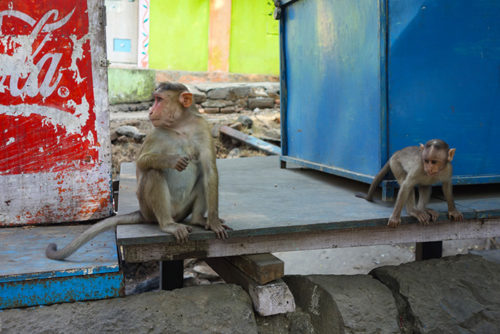
I wanted to simply visit the caves, but a guy came to me and offered to guide me. I was on a budget and I was afraid that it was a scam, but the guy seemed sincere and the price he asked was reasonable, so I decided to “trust the universe” and accepted. At the entrance (which is not free, fyi), you can book a guide. However, if you don’t and regret it, after the entrance, there are several people offering to guide you. Some of them are students. In the end, I was glad that I chose to do the guided visit because it was very interesting and fun.
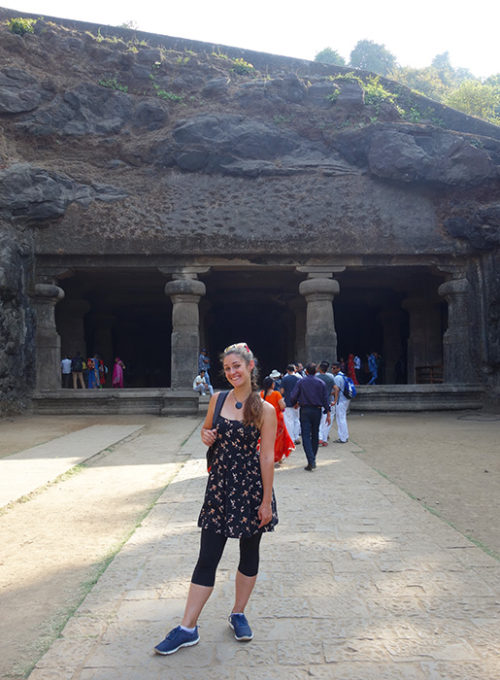
Elephanta Caves: Why That Name?
During the 16th century, the Portuguese took control of the island. Because they saw a giant elephant statue, they named it Elephanta island. As simple as that. The elephant symbolized royalty.
In 1864, The British tried to carry the elephant to take it to England. Unfortunately, the crane they used broke and the elephant statue shattered. Later, the statue was restored and it is now visible in Jijamata Udyan in Byculla, in Mumbai. (I haven’t seen it.)
The site of Elephanta Caves is also known as Gharapuri (which means City of Caves) because there are several rock-cut caves on the island.
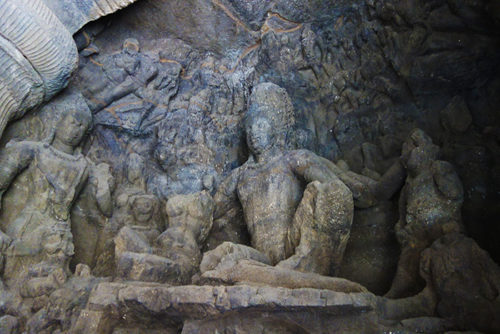
History And Legends About The Elephanta Island
Elephanta island is now classified as a UNESCO World Heritage Site. And for good reasons: the island might be small, but it’s full of ancient archaeological remains that show part of its rich cultural past. Thanks to those, we know that the island was populated in the 2nd century BC. The Elephanta Caves that we can visit today were built around the mid-5th and 6th centuries AD! Isn’t that amazing?
Of course, with a place like that, there are legends. Some regarding the Chalukya dynasty, who might have been patrons to the construction of the caves, because documents show that Gharapuri was their capital. Some are a bit crazier: since there are no known records about the creation of the caves, some people talk about non-humans building them and about supernatural powers. (Now that I think about it, this article might have been good for Halloween rather than Christmas.)
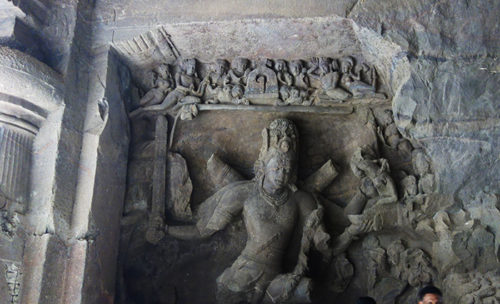
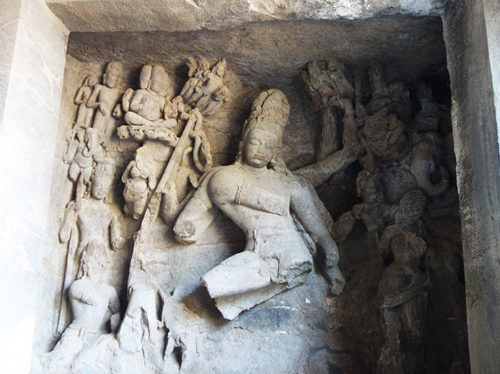
Sculpted Caves And Selective Memory
The stories the guide told me about the sculptures were fascinating, but it seems like my brain decided to focus on the visual beauty and on the atmosphere because I have forgotten most of the legends. I remember the feeling though, I was very impressed by this type of construction, carved from the inside (a bit like in Jordan actually). Also, the statues, even if they are a bit damaged, are beautiful!
Despite my selective memory and thanks to some research, I can give you some information on the sculptures in the Elephanta Caves. Some of the sculpted caves are dedicated to Shiva and some others to Buddha. The first cave is the best-preserved one, the one you don’t want to miss. There has been a lot of damage, but I swear it is completely worth a visit! At the entrance, you’ll find a big “Sadashiva” statue (7m!) that represents the 3 aspects of Shiva: the Creator, the Preserver, and the Destroyer.
If you’d like more information, go there and hire a guide. You won’t regret it!
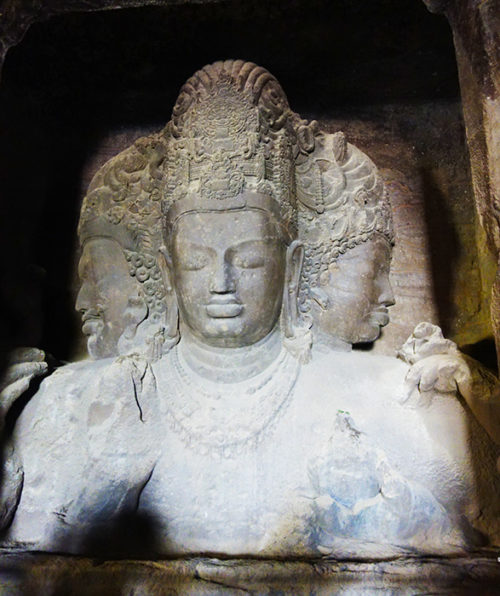
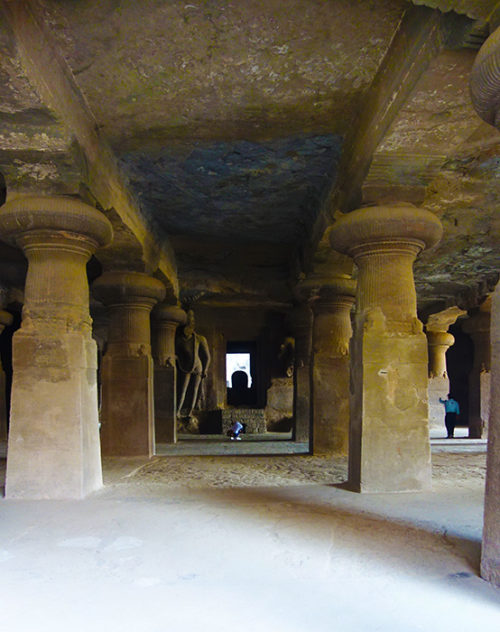
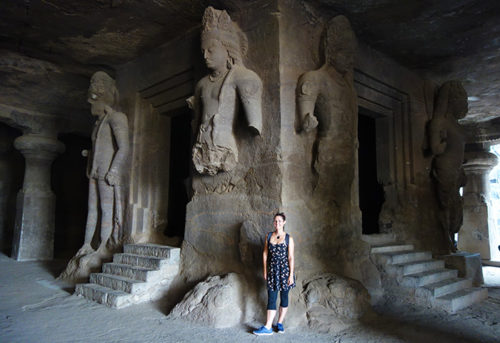
I didn’t have the time to see everything, but thanks to my guide, I made the most of it and left with a lot of stories in my head. The trip back to Mumbai seemed a bit longer, but the views were stunning. Sunset over the city, seagulls… That’s life!

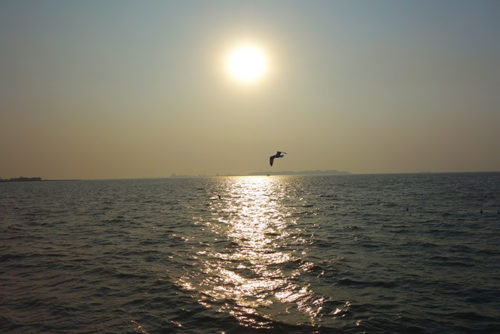
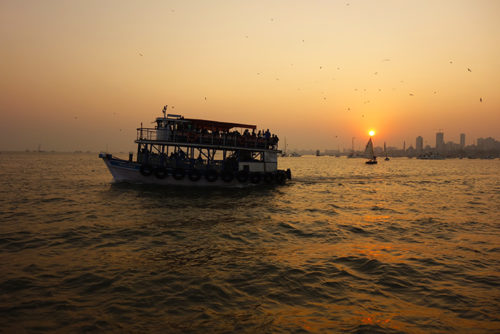
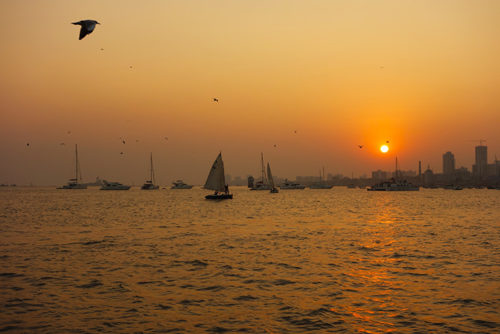
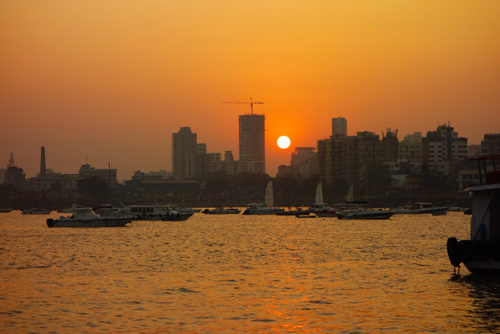
To see more photos of India, you can visit the gallery India.
Have a merry Christmas! 🎅🏻


